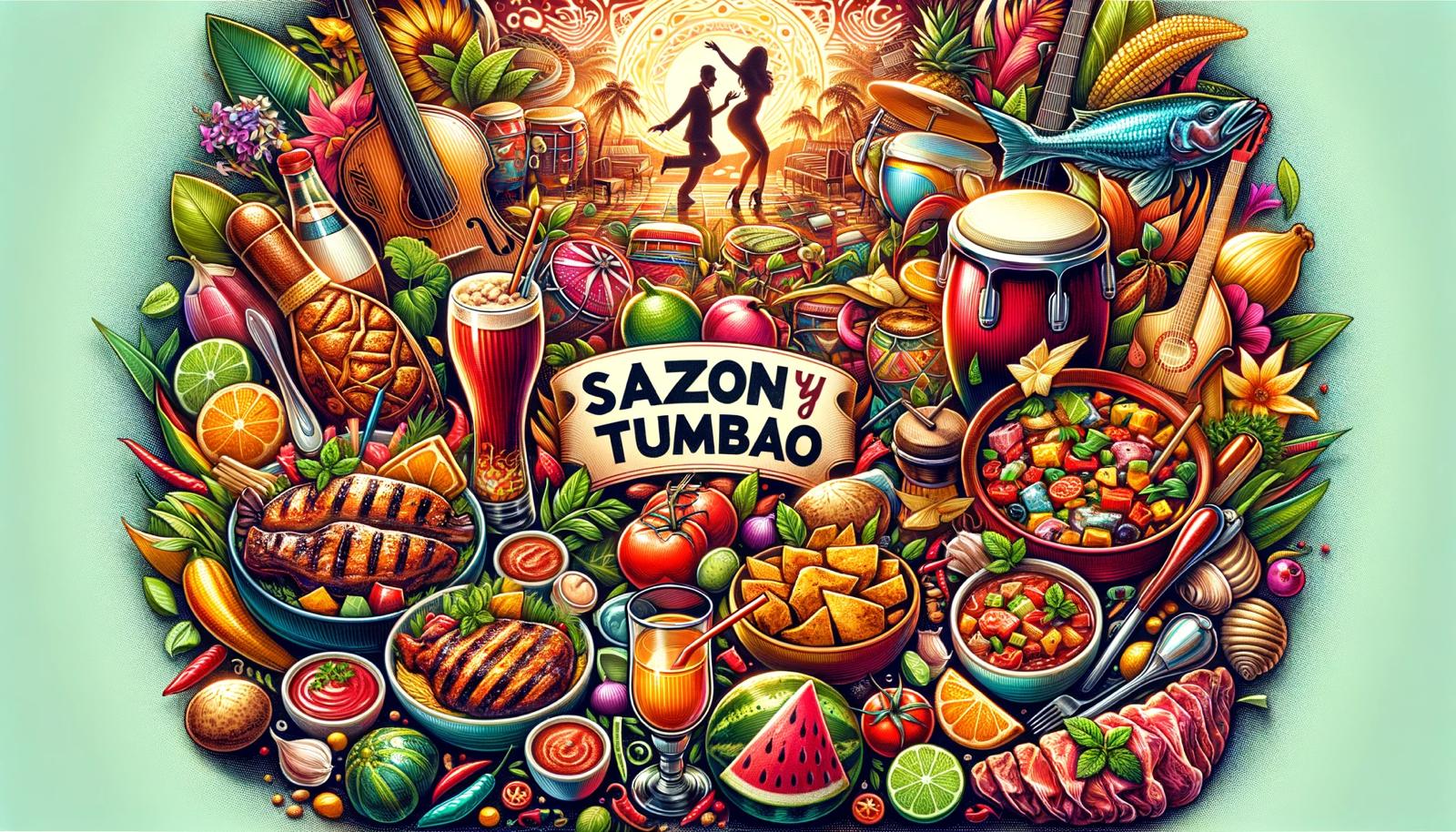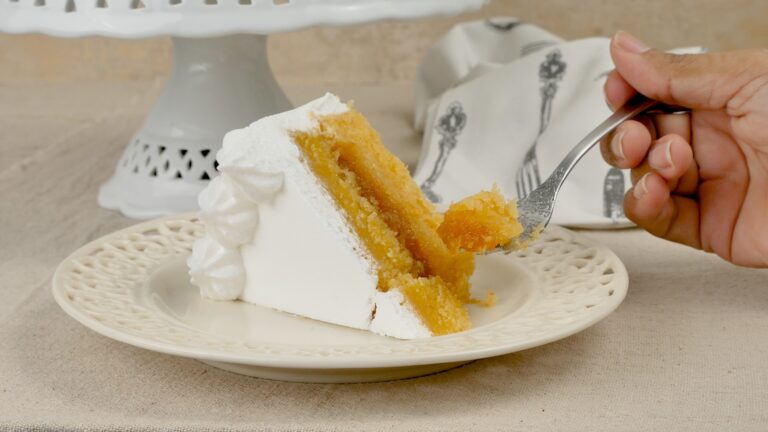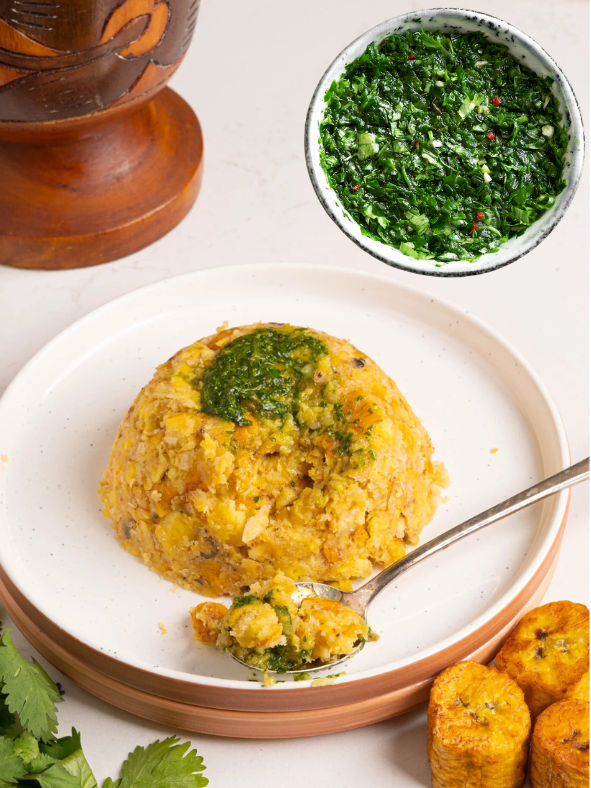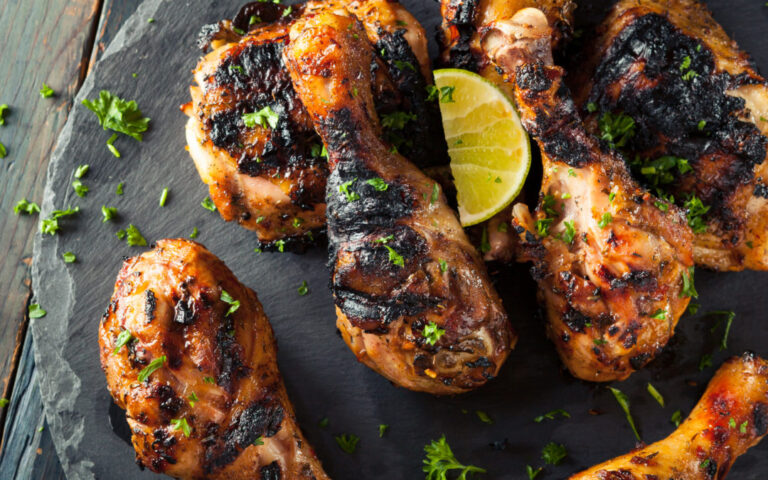Jamaica, the vibrant Caribbean island known for its reggae music and pristine beaches, has a culinary tradition that extends far beyond the internationally famous jerk chicken. Jamaican cuisine represents a fascinating fusion of influences from indigenous Taino people, African, European, Indian, and Chinese culinary traditions that have evolved over centuries.
This rich heritage has produced a diverse array of dishes characterized by bold flavors, aromatic spices, and fresh local ingredients that tell the story of the island’s complex history and cultural identity.

The exploration of Jamaican food reveals a gastronomic landscape where scotch bonnet peppers, allspice (locally known as pimento), thyme, and coconut milk create distinctive flavor profiles that are simultaneously spicy, savory, and sometimes sweet.
In this article, we’re stepping off the beaten path to explore lesser-known Jamaican dishes that deserve way more spotlight. Sure, jerk chicken gets the fame—but Jamaica’s culinary lineup runs deep. From rich stews to street-side bites, these lesser-known Jamaican dishes offer bold flavors and a taste of the island’s true food culture.
Jamaican Breakfast Traditions: Ackee and Saltfish
Breakfast in Jamaica isn’t just the first meal of the day—it’s a celebration of flavors that sets the tone for the day ahead. The national dish of Jamaica, ackee and saltfish, is a traditional Jamaican breakfast plate that combines the creamy, scrambled-egg-like texture of ackee fruit with salted codfish, onions, tomatoes, and spices.
This protein-rich dish is often served with bammy (cassava flatbread), fried plantains, or johnnycakes for a filling start to the day.

Another beloved Jamaican breakfast option is callaloo, a leafy green vegetable similar to spinach, often sautéed with onions, garlic, and tomatoes. Paired with boiled green bananas or yams, it makes for a nutritious morning meal. For those with a sweet tooth, cornmeal porridge seasoned with cinnamon, nutmeg, and sweetened with condensed milk offers comfort in a bowl—a genuine Jamaican way to begin the day.
Traditional Main Dishes in Jamaica

When discussing traditional main dishes in Jamaica, you’ll find an impressive variety beyond the famous jerk chicken. Oxtail stew, simmered slowly with butter beans, carrots, and a blend of aromatic spices, yields tender meat that falls off the bone. The rich gravy is perfect for sopping up with rice and peas, a staple side dish that actually uses kidney beans rather than green peas.
Curry goat stands out as another cornerstone of Jamaican cuisine. Unlike Indian curries, the Jamaican version of this dish incorporates a unique blend of spices including thyme, Scotch bonnet pepper, and allspice. The meat becomes remarkably tender after hours of slow cooking, absorbing the complex flavors of the curry sauce. This dish is particularly popular at Jamaican family events and celebrations, where it’s often served alongside festival (sweet fried dumplings).
Brown stew chicken, with its rich, deeply flavored sauce, represents the comforting side of Jamaican cooking. The chicken is first browned then simmered in a sauce made from caramelized brown sugar, tomatoes, and spices. The result is a dish with layers of sweet, savory, and slightly spicy notes that feels right at home in Jamaica’s culinary landscape.
Jamaican Fish and Seafood Specialties
With the Caribbean Sea surrounding the island, it’s no surprise that Jamaican fish preparations are diverse and delicious. Escovitch fish features fried fish (typically red snapper or doctor fish) topped with a tangy marinade of vinegar, onions, carrots, and Scotch bonnet pepper. The contrast between the crispy fish and the pickled vegetables creates a delightful textural and flavor experience.
Run Down (or “Rundown”) is a coastal favorite where fish is cooked in coconut milk with tomatoes, onions, and spices until the sauce thickens and the fish becomes tender enough to “run down.” This creamy, flavorful dish showcases the importance of coconut milk in many Jamaican recipes.

Steam fish, another authentic Jamaican preparation, involves cooking fish gently with okra, carrots, and cho cho (chayote squash) in a light broth flavored with thyme and Scotch bonnet pepper. The result is a delicate yet flavor-packed dish that highlights the freshness of the seafood.
Jamaican Patties and Snacks

No exploration of Jamaican cuisine would be complete without mentioning Jamaican patties, the beloved street food that has gained international popularity. These flaky, golden pastries filled with seasoned meat (usually beef), chicken, or vegetables are a must-try for anyone visiting the island. The distinctive yellow color of the crust comes from turmeric or curry powder, while the filling delivers a perfect balance of spicy and savory flavors. You’ll often see Jamaican patties being placed in coco bread to create a carb-loaded sandwich that’s both filling and satisfying.
Festival, a slightly sweet fried dumpling made from cornmeal, is another popular Jamaican snack that pairs wonderfully with savory dishes. Its subtle sweetness provides a perfect counterpoint to the heat of many Jamaican dishes like jerk pork. Likewise, bammy, a cassava flatbread that dates back to the island’s indigenous Arawak people, demonstrates how traditional foods remain relevant in modern Jamaican cooking.
Jamaican beef patties might get most of the attention, but vegetable patties filled with callaloo, ackee, or a spicy mixture of vegetables offer delicious alternatives for those avoiding meat. These various Jamaican snacks showcase the versatility and creativity inherent in the island’s approach to food.
Jamaican Jerk: Beyond Jerk Chicken

While jerk chicken rightfully deserves its fame, the application of jerk seasoning extends far beyond poultry. Jerk pork, with its succulent meat infused with the smoky, spicy flavors of jerk spices, offers a delicious alternative that many Jamaicans consider even more authentic than its chicken counterpart. The fatty nature of pork absorbs the complex spice blend beautifully, resulting in meat that’s juicy and packed with flavor.
Jerk seasoning—a potent mixture of allspice (pimento), thyme, scotch bonnet pepper, green onions, and various other spices—can be applied to almost anything. From jerk fish to jerk tofu, the possibilities are endless.
The key to authentic jerk preparation lies in the slow cooking over pimento wood, which infuses the food with distinctive smoky notes that are impossible to replicate with other methods. This cooking technique dates back to the Maroons, escaped slaves who developed this method to preserve meat while avoiding detection in the mountains of Jamaica.
Curry and Jamaican Cooking
Curry holds a special place in Jamaican cuisine, reflecting the significant influence of Indian indentured laborers who arrived on the island in the 19th century. Jamaican curry differs from its Indian counterparts in its distinctive use of allspice and Scotch bonnet pepper, creating a flavor profile unique to the island.
Jamaican curry chicken is a household staple, featuring chicken pieces marinated in a blend of curry powder, garlic, thyme, and onions before being slow-cooked to perfection. The result is tender meat in a rich, aromatic sauce that’s typically served over rice or with roti, a type of flatbread also derived from Indian influence.

Jamaican curry shrimp offers a quicker alternative, with succulent seafood bathed in a vibrant sauce that’s ready in minutes rather than hours. Many Jamaican households have their own special curry blend, with recipes passed down through generations, highlighting how seriously spice is taken in Jamaican cooking.
Rice and Peas: Traditional Jamaican Side Dishes

Rice and peas, despite its name, is actually made with kidney beans (or “red peas” as they’re called locally) and coconut milk, creating a flavorful base for many Jamaican meals. This traditional Jamaican side dish is so fundamental to Jamaican cuisine that Sunday dinner would be considered incomplete without it. The aroma of thyme, scallions, and coconut milk infusing the rice creates an irresistible accompaniment to main courses.
Other traditional Jamaican side dishes include turned cornmeal (similar to polenta), sweet potato pudding (which can be served as both a side and dessert), and roasted breadfruit. Breadfruit, when roasted over an open flame until the skin blackens, reveals a starchy interior similar to bread—hence its name. This versatile fruit can also be boiled, fried, or incorporated into more complex dishes.
Jamaican greens like callaloo are often sautéed with onion, garlic, and tomatoes to create a nutritious side that balances the richness of meat dishes. Festival, those slightly sweet fried dumplings mentioned earlier, makes frequent appearances alongside spicy main courses, offering welcome relief from the heat.
Jamaican Soup and Stew

Jamaican soup is very filling and often constitutes a complete meal rather than just a starter. The most iconic is perhaps mannish water, a traditional Jamaican soup made from goat head, feet, and trimmings, along with ground provisions (starchy vegetables like yam, potato, and green banana). Despite its name, this hearty soup is beloved for its rich flavor and is often referred to as an aphrodisiac.
Red peas soup, made with kidney beans, salted pork, and various vegetables, represents comfort food at its finest. The addition of small dumplings known as “spinners” adds substance to this already hearty dish. Pumpkin soup, often spiced with ginger and Scotch bonnet pepper, offers a slightly sweeter alternative that showcases the natural bounty of the island.
Fish tea, despite its name, is actually a light fish soup rather than a beverage. This clear, spicy broth is believed to have restorative properties and is popular at beach gatherings. The many different Jamaican soup varieties demonstrate how the island’s cooks can transform humble ingredients into deeply satisfying meals.
Jamaican Dessert and Sweet Treats

Traditional Jamaican dessert offerings might not be as internationally recognized as the island’s savory specialties, but they’re equally deserving of attention. Gizzada, a coconut tart with a pinched crust (sometimes called “pinch-me-round”), delivers sweet, spiced coconut filling in a crisp pastry shell. Sweet potato pudding, enriched with coconut milk and warming spices like nutmeg and cinnamon, showcases the Jamaican sweet tooth while incorporating local ingredients.
Jamaican rum cake, also known as black cake, is the centerpiece of Christmas celebrations and special occasions. This rich, dark cake contains fruits soaked in rum and wine for months before baking, resulting in a complex, boozy dessert that’s nothing like conventional fruit cake. The use of Jamaican rum gives this cake its distinctive character and demonstrates how spirits are incorporated into the cuisine.
Grater cake, made from grated coconut and sugar boiled together and colored pink and white, offers a simpler sweet treat often enjoyed as a snack. Meanwhile, coconut drops combine chunks of coconut with ginger and brown sugar for a quick, delicious confection that highlights the flavors of Jamaican spices in a sweet context.
Jamaican Drinks and Beverages
The beverage culture in Jamaica is as diverse and flavorful as its food. Jamaican drinks range from refreshing non-alcoholic options to potent rum-based cocktails. Sorrel, made from hibiscus flowers steeped with ginger, cloves, and sweetened to taste, is especially popular during Christmas season. This deep red drink can be enjoyed as is or spiked with Jamaican rum for an adult version.

Jamaican rum itself deserves special mention—the island produces some of the world’s finest rums, with brands like Appleton Estate gaining international recognition. Rum punch, combining rum with fruit juices and Jamaican strawberry syrup, offers a taste of island celebrations and is a fixture at Jamaican family events.
On the non-alcoholic side, Jamaican malta, a sweet, non-fermented beverage made from barley, hops, and water, provides a unique refreshment option. Ginger beer, featuring a spicy kick from fresh ginger, offers another distinctive taste of the island. Coconut water, drunk straight from young coconuts, provides natural hydration and is particularly popular at beach locations.
Spice and Jamaican Seasonings
The distinctive flavors that define Jamaican cuisine come from a unique blend of spices and seasonings that reflect the island’s diverse cultural influences. Allspice (pimento) stands as perhaps the most important spice in Jamaican cooking, providing the characteristic flavor foundation for everything from jerk seasoning to Jamaican beef dishes. Native to the island, these small berries resemble peppercorns but offer a complex flavor that combines notes of cinnamon, nutmeg, and cloves.
Scotch bonnet pepper provides the signature heat in many traditional Jamaican recipes. Far more than just a source of spiciness, this vibrant pepper contributes fruity undertones that have become essential to authentic Jamaican flavor profiles. Jamaican scotch bonnet pepper is significantly hotter than

jalapeños, and cooks often use them whole (but unbroken) to impart flavor without overwhelming heat, or chopped finely when a fiery dish is desired.
Thyme, ginger, garlic, onion, and scallions form the aromatic base for many Jamaican dishes, while spices used in the Jamaican kitchen often include cinnamon, nutmeg, and cloves for both savory and sweet applications. West Indian curry powder, adapted from Indian traditions but unique to Caribbean cooking, contains turmeric, cumin, coriander, and other spices tailored to complement the bold flavors of Jamaican ingredients. Together, these Jamaican seasonings create the unmistakable taste that makes the island’s cuisine so memorable and distinctive.
Authentic Jamaican Recipes

The methods used in Jamaican cooking are as important as the ingredients themselves in creating genuine Jamaican flavor. One of the most famous techniques is jerk, which traditionally involves marinating meat in a spicy paste before slow-cooking over pimento wood. This smoking method was developed by the Maroons, escaped slaves who needed to cook without creating visible smoke that would reveal their location. Today, this historic preservation method has evolved into one of the world’s most celebrated cooking styles.
“Pot cooking” represents another cornerstone of Jamaican cooking—the slow simmering of ingredients in large pots that allows flavors to meld together while tenderizing tougher cuts of meat. This approach is evident in dishes like oxtail stew, curry goat, and many Jamaican soup recipes. The patience required for this cooking style reflects the unhurried rhythm of island life and the importance placed on food as a centerpiece of Jamaican family gatherings.
For those who want to try making authentic Jamaican dishes at home, understanding these techniques is crucial. While modern adaptations might use grills instead of pimento wood or pressure cookers to speed up the slow-cooking process, the principle remains the same: allow time for flavors to develop fully. This approach to cooking exemplifies the Jamaican culture’s appreciation for process rather than just end results, making the preparation of food an experience to be savored along with the meal itself.
Delicious Lesser-Known Jamaican Dishes

Despite Jamaica’s relatively small size, distinctive regional differences exist in the island’s cuisine, influenced by local ingredients, historical settlement patterns, and proximity to the sea. Coastal areas naturally emphasize Jamaican fish dishes and seafood preparations, with “Run Down” being particularly popular in port towns. In contrast, inland communities traditionally rely more heavily on land-based proteins like goat and chicken, developing hearty stews and curries that sustain those working in the mountainous terrain.
Portland, in the northeast, is famous for its jerk preparations, particularly at Boston Beach where many believe the most authentic jerk dishes can be found. Meanwhile, the southern coast offers more dishes like bammy and festival that reflect stronger Arawak indigenous influences. Montego Bay and the tourist areas have developed their own take on Jamaican cuisine—one that balances traditional flavors with international influences while catering to visitors wanting to experience local Jamaican food during their stay.
Kingston, as the capital, represents a melting pot of all these regional styles plus urban innovations that continue to push Jamaican cuisine forward. Here, street food flourishes alongside restaurants serving both traditional dishes and modern interpretations. This regional diversity ensures that a culinary tour of Jamaica provides constant discovery, with unique dishes you’ll find varying from parish to parish. For the true Jamaican experience, sampling local specialties in their place of origin offers insight into how geography, history, and culture have shaped what appears on the plate.
Conclusion
The diverse flavors of Jamaican cuisine reflect the island’s rich cultural heritage and abundant natural resources. From spicy jerk preparations to comforting stew dishes, from quick street food to elaborate celebration meals, Jamaican food offers a genuine culinary adventure that goes far beyond the familiar jerk chicken.
By exploring different Jamaican dishes and attempting easy Jamaican recipes at home, food enthusiasts can gain a deeper appreciation for this vibrant culinary tradition. Each dish tells a story of history, cultural exchange, and the creative spirit that continues to make Jamaican cuisine one of the world’s most exciting food traditions.
Disclosure: Our blog contains affiliate links to products. We may receive a commission for purchases made through these links. However, this does not impact our reviews and comparisons. We try our best to keep things fair and balanced, in order to help you make the best choice for you.







